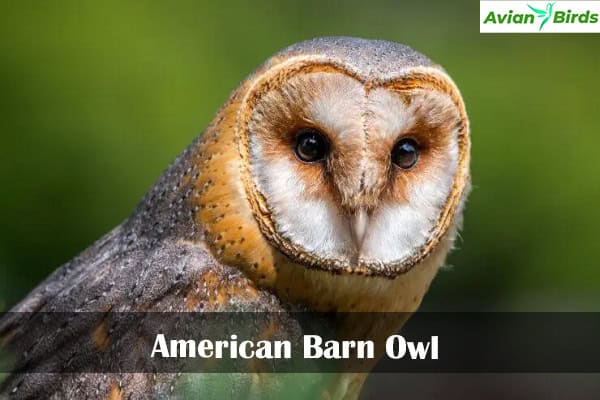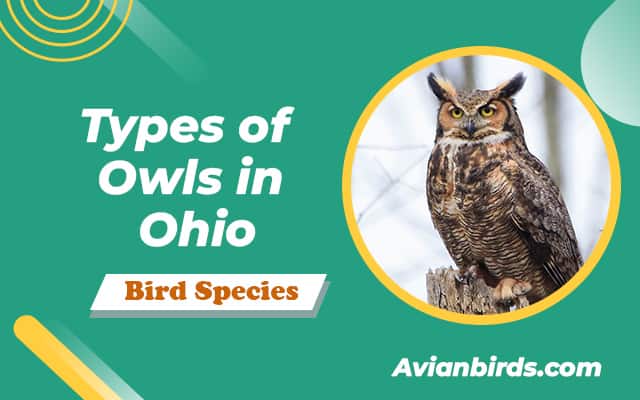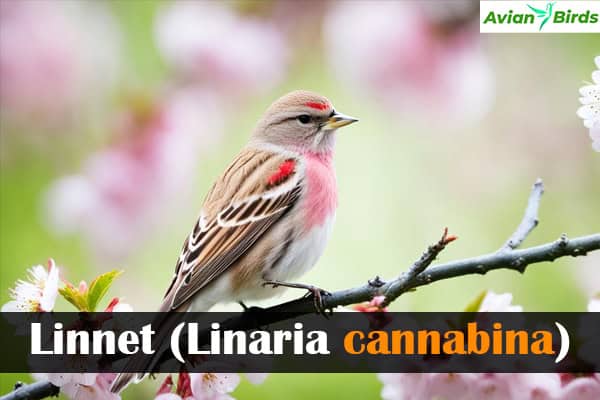Top 8 types of Owls in Massachusetts (ID Guide With Pictures)
Did you know Massachusetts has 8 different types of owls? These include the striking Barred Owl, Great Horned Owl, and Eastern Screech-Owl. These fascinating birds play a key role in the local ecosystem and are a delight for birdwatchers across the state.
Understanding the unique traits of different owl species can make birdwatching in Massachusetts more enjoyable. Whether you’re a seasoned birder or just starting out, this guide is for you. It will help you spot and identify the top 8 owls in Massachusetts.
You’ll learn about their identification features, where they live, and what they eat. From the Great Horned Owl’s long wings to the Northern Saw-whet Owl’s small size, each species adds to Massachusetts’ wildlife. Get ready to explore the fascinating world of owls in Massachusetts!
Introduction to Owls
Owls are one of nature’s most fascinating bird groups. They have special traits that make them great at night hunting. This introduction to owls shows how they are different from other birds.
Owls can see well in the dark and hear very clearly. This helps them catch prey in the dark.
In places like Massachusetts, you can find many owl species. For example, the Great Horned Owl and the Eastern Screech Owl are there. Each owl has its own way of living and hunting.
Snowy Owls are known for travelling long distances to find food, which shows their strength, even when it’s hard.
Owls are also very mysterious. People who love birds and nature find their sounds amazing. For instance, The Eastern Screech Owl makes sounds like whinnies and trills.
In Massachusetts, spots like Plum Island and Salisbury State Park are great places to see owls. Learning about these birds helps us better understand nature and appreciate their role in cultures around the world.
The Role of Owls in Ecosystems
Owls are key players in ecosystems as top predators. They control the numbers of small mammals and insects. This balance helps different species live together well.
By keeping populations in check, owls help biodiversity. They make sure many species can thrive together.
Owls do more than just control numbers. Their hunting helps strengthen habitats, and they also show us how healthy the environment is.
In places like Massachusetts, New York, and Maine, people help track owl numbers by reporting sightings and listening for calls. This helps conservation efforts.
The Massachusetts Audubon Owls Project helps people learn about owls. It gives tools to identify different owl species. Projects like “Who’s Whoo-ing” let people meet local owls and help gather data.
These efforts show how important owls are for our planet. They help keep ecosystems balanced and diverse. Owls play a vital role in the web of life.
Where to Spot for Owls in Massachusetts

To see live owls in Massachusetts, you can visit:
- Mass Audubon Wildlife Sanctuaries—Drumlin Farm (Lincoln) and Broadmoor (Natick)—are great places to spot owls.
- Great Meadows National Wildlife Refuge – This is a prime owl-watching spot in Concord.
- Mount Auburn Cemetery – In Cambridge, it’s known for sightings of Great Horned Owls.
- Parker River National Wildlife Refuge – This area is popular for spotting migratory Snowy Owls in winter on Plum Island.
- Quabbin Reservoir – A large area where Great Horned and Barred Owls can often be found.
1. Great Horned Owl
The Great Horned Owl, known as Bubo virginianus, is a standout in North America. It’s big and has striking features that birdwatchers love. You can spot it by its unique traits.

Identification Features
The Great Horned Owl has big ear tufts and yellow eyes. It’s 17 to 25 inches long, and its grey and brown feathers help it hide in the wild. It also has a 5-foot wingspan, making it look even bigger.
Habitat and Range
Great Horned Owls live in many places in North America. They like trees and rocky spots for nesting. In Massachusetts, they were found in many areas, including cities and forests.
Diet and Hunting Behavior
These owls eat small mammals, birds, and even skunks. They hunt in different ways, depending on what’s available. This makes them very good at finding food.
| Feature | Details |
|---|---|
| Scientific Name | Bubo virginianus |
| Size | 17-25 inches |
| Wingspan | 3ft 0in to 5ft 0in |
| Weight | 1200 to 1600 grams (2.64 to 3.52 lbs) |
| Lifespan | 25-50 years |
| Diet | Small mammals, birds, skunks |
| Habitat Preferences | Trees and rocky nest sites |
2. Short-eared Owl
The Short-eared Owl, known as Asio flammeus, is very interesting. It has special looks and ways of acting. Birdwatchers love to see these owls in the wild. Knowing how to spot a Short-eared Owl is fun.

Identification Features
The Short-eared Owl is easy to spot because of its bright colours. It’s about 13-17 inches long and brownish in color. Like many owls, it has a special face disk.
This helps the owl hide in grasslands while it hunts. Its colours match the grass, making it hard to see.
Habitat and Range
Short-eared Owls live in open places like fields and grasslands. They like to nest in meadows and even airports. They are found in the Cape Cod and Islands area.
In Atlas 1, they were in 13 blocks, which was 9.6% of the area. But Atlas 2 showed only three blocks, just 2.1%. Still, they are all over Massachusetts.
Behaviour During the Day
Short-eared Owls are active during the day. They hunt voles using their sharp eyes and ears. If they feel scared, they use clever tricks to hide their nests.
| Feature | Description |
|---|---|
| Scientific Name | Asio flammeus |
| Size | 13-17 inches |
| Habitat | Open fields, grasslands, meadows |
| Breeding | Ground nesting |
| Primary Prey | Voles |
| Activity | Diurnal |
| Conservation Status | Endangered in Massachusetts |
Also read: Owls In Virginia
3. American Barn Owl
The American Barn Owl, known as Tyto furcata, is a unique species. It has a heart-shaped face and sandy-coloured feathers with darker edges. Adults are 11 to 17 inches long and have a wingspan of 39 to 49 inches.

These traits make them look beautiful and help them hunt at night.
Physical Description
The American Barn Owl looks different from other owls. Its heart-shaped face helps it hear better. Its soft feathers make it a silent flyer, perfect for catching small mammals.
Their sandy colours help them hide in fields and farms.
Conservation Status
Despite being found in many places, the American Barn Owl is in trouble. In Massachusetts, they stay south of New England because of cold winters. The harsh winter of 2015 hurt their numbers a lot.
Efforts to save them include nesting boxes and special habitats. Places like Mass Audubon’s Felix Neck Wildlife Sanctuary help. On Nantucket, over sixty Barn Owls once lived, and efforts are still being made to help them.
Must Read: Owls In Arizona
4. Northern Saw-whet Owl
The Northern Saw-whet Owl is one of the smallest owls in North America. It is about 6.5 to 9 inches long and has brown-streaked feathers and a round head, making it a favorite among birdwatchers.

Despite being small, it weighs less than two tennis balls. It is a big presence in Massachusetts’ forests.
Size and Appearance
The Northern Saw-whet Owl’s size helps it survive. Its small body fits well in dense forests. It blends into the foliage easily.
It has large, dark eyes and a facial disk for better hearing. Its looks are both useful and charming, drawing in nature lovers.
Habitat Preferences
The Northern Saw-whet Owl likes dense forests. It nests in old woodpecker holes or artificial boxes. Its population and range have grown in Massachusetts.
For example, it now covers about 70 blocks, up from 19 in the first survey. It’s especially common in Cape Cod and the Taconic Mountains.
| Region | Blocks in Atlas 1 | Blocks in Atlas 2 |
|---|---|---|
| Bristol and Narragansett Lowlands | 2 | 1 |
| Cape Cod and Islands | 7 | 19 |
| Taconic Mountains | 1 | 3 |
| Marble Valleys/Housatonic Valley | 0 | 5 |
| State Total | 19 | 70 |
Also Read: Owls in Indiana
5. Barred Owl
The Barred Owl, known as Strix Varia, is very interesting to bird watchers and nature fans. It has unique calls and is curious. This owl is a key part of Massachusetts’ woodlands.
Its most famous sound is “Who cooks for you? Who cooks for you all?” This sound is heard a lot in March. It’s a great time to hear these birds.

Distinctive Calls
Barred Owl calls are not just for talking. They help with mating and claiming territory. You can hear their hoots in forests, especially at twilight and night.
These calls make them easy to spot. They are one of the most heard owl species.
Common Habitats in Massachusetts
These owls live in moist woodlands, river bottoms, and swamps. They like older forests for nesting. They use tree cavities or nests from other birds.
Barred Owls are now found in more places in Massachusetts, and their range has tripled. They are in all 13 ecoregions in the state, and the Berkshire Highlands saw a big increase in sightings.
Feeding Habits
Barred Owls eat small mammals, birds, and amphibians. They hunt at night but during the day in winter, which makes them easier to see.
They can change how they hunt based on the weather. This means you might see them more when it’s snowy.
| Attribute | Details |
|---|---|
| Scientific Name | Strix varia |
| Typical Call | “Who cooks for you?” |
| Common Habitats | Swamps, river bottoms, moist woodlands |
| Nesting Behavior | Cavities, old nests, man-made boxes |
| Diet | Small mammals, birds, amphibians |
| Population Growth | 25.6% increase statewide |
Must visit: Owls in Arkansas
6. Eastern Screech-Owl
The Eastern Screech-Owl, known as Megascops asio, is very interesting. It shows how well it can adapt and hide. This bird has two main colours: grey and red. These colours help it blend in, whether it’s in thickets or cities.
This skill helps it avoid predators. It also makes it good at catching small animals and bugs.

Variations in Color Morphs
These owls are small, about 6.3 to 9.8 inches long. Their mottled feathers help them hide, and the grey and red colours are important for survival in different places.
Their special feathers are key for staying hidden. This helps them survive in both wild and built-up areas.
Habitat and Distribution
In Massachusetts, Eastern Screech-Owls are everywhere. During the Atlas 1 survey, they were in almost 40% of city blocks. Their homes have changed a bit, but they still live in about 20% of the state, as Atlas 2 showed.
They like to nest in tree holes, making them hard to find. Their ability to live in many places shows how strong these birds are.
Read More🐦Related Articles:
| Hummingbirds in Texas |
| How to Keep Squirrels Out of Bird Feeders |
| Woodpeckers Found in Oregon |
| Woodpeckers in Indiana |
| Woodpeckers in Arizona |
Final Words
Owls in Massachusetts play a vital role in maintaining the balance of the local ecosystem. These fascinating birds of prey, with species such as the Great Horned Owl and Eastern Screech-Owl, contribute to controlling rodent populations and promoting biodiversity. Protecting their habitats and understanding their behaviours is crucial for conserving these remarkable creatures and ensuring they continue to thrive in the region.
Frequently Asked Questions
Q1. What owls are common in Massachusetts?
Common owls include the Great Horned Owl, Eastern Screech-Owl, Barred Owl, Northern Saw-whet Owl, and Snowy Owl (in winter).
Q2. How do you attract owls in Massachusetts?
You can attract owls by installing nesting boxes, maintaining natural habitats, reducing outdoor lighting, providing water sources, and leaving brush piles for prey.
Q3. Where to see owls in MA?
Great spots include Mass Audubon sanctuaries, Great Meadows National Wildlife Refuge, Quabbin Reservoir, and Mount Auburn Cemetery.
Q4. Do Great Horned Owls live in Massachusetts?
Yes, Great Horned Owls are year-round residents and can be found in forests, wetlands, and urban areas across the state.







